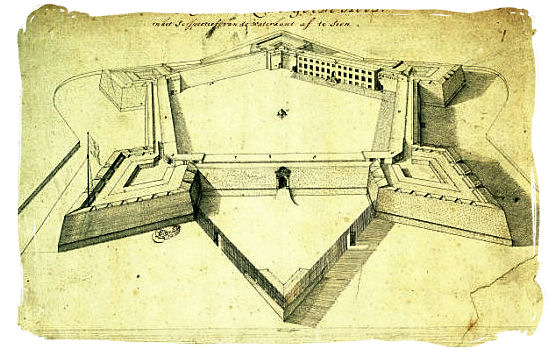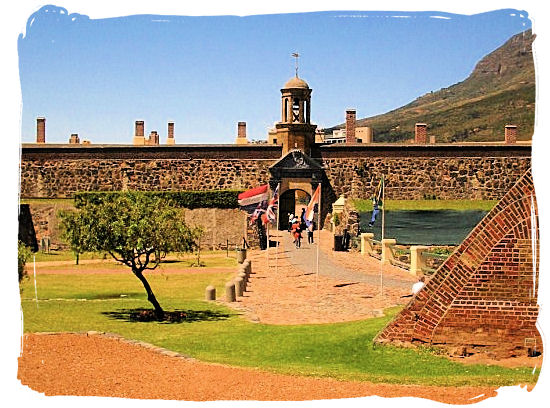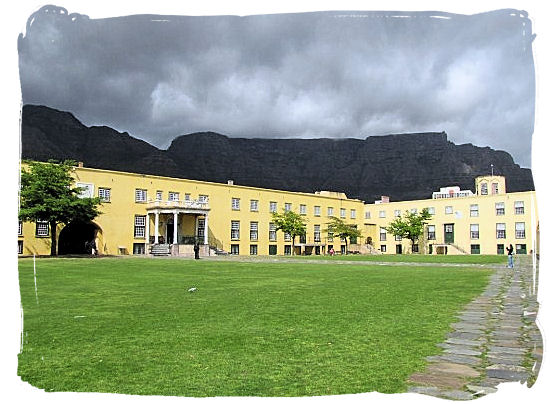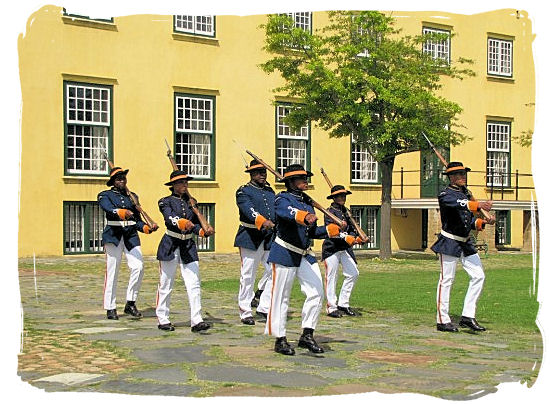You are here:
-
Home
›
-
South Africa's cities
›
-
Cape Town
›
-
Cape Town tourism attractions
›
-
Castle of Good Hope
The Castle of Good Hope in Cape Town,
South Africa's
oldest colonial building
As part of its multitude of great attractions Cape
Town has a very rich historical and cultural heritage, represented among others by the Castle of
Good hope, the oldest colonial building in South Africa and one of cape Town's most recognizable
landmarks.
Also known by the locals as the Castle and called "The Cape Castle" by many tourists it is a
highly popular tourist attraction for both children and adults.
A unique combination of history, tradition, fine wine and food, great craftsmanship and military
ceremonies awaits you at the Castle of good Hope.
The year 1652 saw the arrival of Commander Jan van Riebeeck with three ships and their crew in
Table Bay.
Sent by the Dutch East India Company (in Dutch: "Verenigde Oost- Indische Compagnie") also known
as the VOC, They were the first European people to settle in the Southern part of Africa.

Sketch of the Castle in the year 1680
Dutch East India Company, Jan van Riebeeck
As one of the most powerful trading organizations in those days, the VOC's was to
establish a midway provision station for the shipping route between Holland and their colonies in
the east such as Indonesia and Malaysia. That was the start of what we today know as South Africa.

Aerial view of the Castle as it looks like today
Castle of Good Hope, Dutch East India Company, Jan van Riebeeck
One of the first things the VOC settlers did when establishing their new settlement at Table
bay, was to build a fort to protect themselves against the possibility of a hostile local
population and also the danger of maritime attacks from across the sea.
Jan van Riebeeck and his people built their first fort, a small straightforward square building
made of clay and timber in 1652. Between 1666 and 1679 this was replaced by the large pentagonal
fortification that we know today.

Main entrance to the Castle
Dutch East India Company, Jan van Riebeeck
From its beginning, the Castle was initially the hub of military, administrative and civilian,
life in the Cape, until the colony expanded and several operations and activities moved away from
the Castle. The names of the five bastions were derived from the titles of Willem III Prince of
Orange Nassau and ruler of Holland at the time.
Their names are "Nassau", "Oranje", "Catzenellenbogen", "Buuren" and "Leerdam". Inside the
Castle provision was made among others for living quarters, offices, cells, a bakery, a church
and numerous other facilities. It was practically a town all by itself.

The inner courtyard of the castle
Castle of Good Hope, Dutch East India Company, Jan van Riebeeck
Photograph by Matt Werner
The Castle was proclaimed a National Monument in 1936. Today it is home to the renowned William
Fehr Collection of historic art pieces, the Castle Military Museum, ceremonial facilities for
long established Cape Regiments and the military staff of the South African armed forces in the
Western cape.

Castle guards on their way to the key ceremony
Castle of Good Hope, Dutch East India Company, Jan van Riebeeck
Photograph by Matt Werner
Proclaimed a national monument in 1936, the Castle has been turned into a museum. There are
guided tours every weekday, conducted by Castle guides and every day you can witness the change
of the Castle Guard symbolized by the key ceremony that has been performed in the Castle from its
earliest days and the firing of the signal canon after the ceremony.
Include a visit to the Castle of good Hoop in your itinerary, it's worth it and it is right in
the centre of Cape Town and only a 20 minutes drive from Cape Town International Airport.
Top of Page
-
Home
›
-
South Africa's cities
›
-
Cape Town
›
-
Cape Town tourism attractions
›
-
Castle of Good Hope

